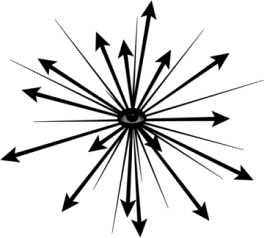Leprechaun of Myth vs. Leprechaun of Film
Table of Contents
The Leprechaun is a mythical creature of Irish folklore usually described as a small, bearded man wearing a coat and hat, often green. These magical humanoid creatures are often associated with magical abilities such as granting wishes or possessing a pot of gold at the end of a rainbow. Cultures tend to interpret mythical creatures through various media iterations, such as the vampire being seen as monstrous but in other versions seen as romantic, making the earliest or classically conceived versions much different than later accounts. Dissimilar to other creatures, the leprechaun myth changed little over time, and many of the creature's original elements remain true today. A comparison of the earliest leprechaun myth found in the story “The Adventure of Fergus son of Léti” with the 1993 horror film “Leprechaun” reveals a glaring difference in iterations of the leprechaun, yet the original creature endures.
The Classical Leprechaun
Originating in Ireland between sixteen and seventeen hundred, Leprechauns first appeared in literature as a small, men with long beards who were cobblers by trade (Winberry, 1976). Contrary to the wearing of green, early accounts of the leprechaun claim he wore red clothing but this description changed depending upon the origin of the author in question and time. Writers from the different areas within Ireland and Europe describe the creature differently and this may have occurred to the deepening inclusion of the Leprechaun in Irish culture. The color green’s association with Ireland as a symbol of national pride began somewhere in the 1600s and continued to grow over time and this is the most likely source of the Leprechauns green color as he became part of Irish nationalism (Winberry, 1976).
Adventure of Fergus son of Léti
The earliest views of the leprechaun are encapsulated in the medieval story “The Adventure of Fergus son of Léti” (McLeod, 2011). This story describes the classical Leprechaun as mischievous and played pranks on humans but never held malevolence until later iterations of the myth. There are several stories in the Adventure of Fergus son of Léti but in the Saga of Fergus mac Léti this early version of the leprechaun is described when the King Fergus falls asleep on a beach three leprechauns take him into the ocean and upon awakening and capturing the leprechauns, they give him three wishes in exchange for freedom. This is the earliest account of the leprechaun ability to grant wishes and would ingrain in folklore as a common theme of capturing leprechauns to obtain wishes.
The story of Fergus also describes the leprechauns as sea creatures which diverges from later iterations but this early account provides the prankish nature as well as the magical ability to grant wishes which continues to this day. Other magical abilities are inferred such as the creatures living underwater and being able to breath. Because King Fergus is a legendary Irish king, it is likely that this story is the founding upon which the Leprechaun linked with Irish nationalism and slowly morphed into a national pride.
This classical view of the Leprechaun initiated by the story of Fergus has been documented in film going back to the early days of Hollywood both as entertainment and commercial,
The Adventures of Chip and Dip (1968) deploys animated leprechauns and live-action kitchen scenes to prove beyond the shadow of a doubt that every dish you ever heard of can be vastly improved by tossing potato chips (they’re ninety-three percent energy!) into the recipe.
The mischievous nature of the leprechaun continues all the way into the twentieth century with Disney and many other films depicting leprechauns stealing things from unsuspecting humans and granting wishes.
Leprechaun the Movie
Not until the movie series, “Leprechaun,” did this creature become associated with evil. The 1993 horror movie “Leprechaun” is a modern adaptation to the classic Leprechaun myth. The plot of the story centers on a vengeful Leprechaun who believes a family stole his pot of gold and begins terrorizing them to return the gold, murdering several people until the characters admit having hid the gold. The movie ends with the leprechaun believed by characters to be killed by the audience sees that he has escaped, leaving the movie open for creating sequels: eight to be exact.
There are some Irish folklore artifacts present in this film such as the four-leaf clover, which is used to trap the leprechaun as well as the pot of gold myth. The clover having little to do with anything related to the leprechaun beyond Irish background appears almost anachronistic. The mischievous nature of the leprechaun is perhaps the most glaring exaggeration of the classic myth as the movie depicts the creature as maniacal and sinister. This new iteration does not appear to harm the original classic leprechaun view and perhaps the classic leprechaun mythology hurts the movie.
The New Iteration of Leprechaun Myth
There are many instances of myths reinterpreted over time which successfully take on the qualities of the new perspective, but the movie “Leprechaun” fails in this regard. When watching “Leprechaun” the movie is a tired replay of hack and slash horror filled with suspense moments ending in shock and gore. However, the use of the Leprechaun in this movie instills a sense of silliness in the viewer as the Leprechaun version is difficult to understand in this context having always thought of the creature as an Irish prankster who gives wishes to those who catch him. Reviewer Richard Harrington of the Washington Post had an equally difficult time relating to this iteration referring to the creature adaptation as a “nasty, amphetamine-driven portrayal” in a 1993 review (Harrington, 1993). The happy go lucky creature of lore cannot be separated from this doppelganger movie version and this creates a sharp contrast to the cultural identification most people hold. This lack of continuity in myth and creature may explain the low ratings given the movie on IMBD and other sites.
Despite the depiction of the leprechaun as a murderous creature driven by greed for gold, the classical version of the myth lives on in many different cultural manifestations. The leprechaun continues to be a source of pride for Ireland as well as a mascot for sports teams and even a box of cereal. Future iterations of the leprechaun are likely to occur as this seems to occur with most mythical creatures, but among myths the leprechaun has held its image and history remarkably well. In many ways the original myth of the leprechaun remains true to this day but even more consistent are versions of the little man of the 1700s and 1800s with today’s versions. Even the movie could not separate these facets of the myth. Perhaps future iterations will alter the view of the leprechaun in culture, but for now, his wholesome image is safe.





